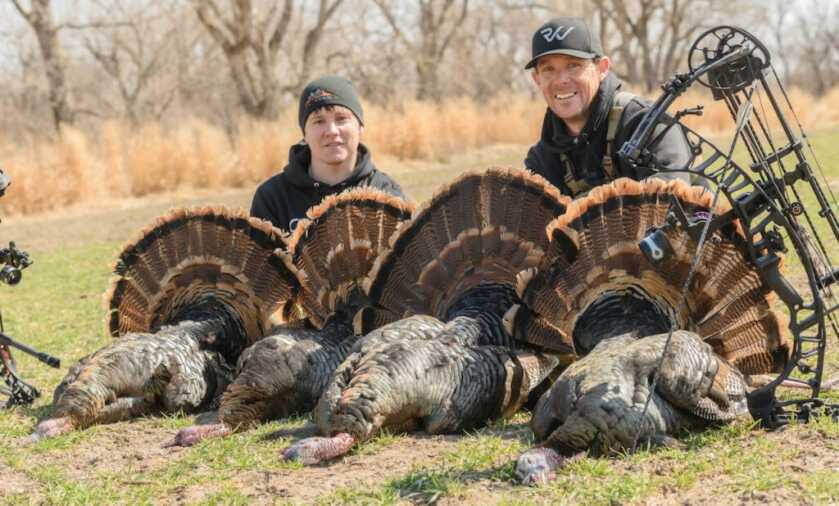
It’s been a long winter, but in my neck of the woods, warm rays of sunshine are starting to tease the woods to life. A few weeks ago, while picking up some forgotten-about trail cameras, a pair of toms thundered and chills shot up my spine.
In many states, stick-and-stringers get the first crack at springtime butterballs, and for the past 25 years, I’ve been one of those bow-toters hoping to draw a tom bowhunting close. During that tenure, I’ve amassed several tips and tricks for archers to use throughout the season, but for now, let’s focus on the early season.
Often from late March through the first week and a half of April, turkeys will still be in wintertime flocks. Love is on their mind for sure, but often after flying down, toms will follow a wad of hens to their morning breakfast location. If you’re planning a morning field ambush, rather than hoping to pull a single tom off a mob of hens with fancy decoys and calling, invest some scouting days and note how birds enter and exit the field. Early-season turkeys are predictable and highly patternable.
Morning Field Hunt
While hunting Nebraska’s March 25 bow opener three seasons back, my amigo Terron Bauer spent three days watching birds move about a cornfield. He pinpointed the roost location on his Hunt Stand app and timed how long it took the first hens to hit the field after flying down. Then, he marked up on his map where the birds entered the field and exited and where the mob tended to drift about while feeding.
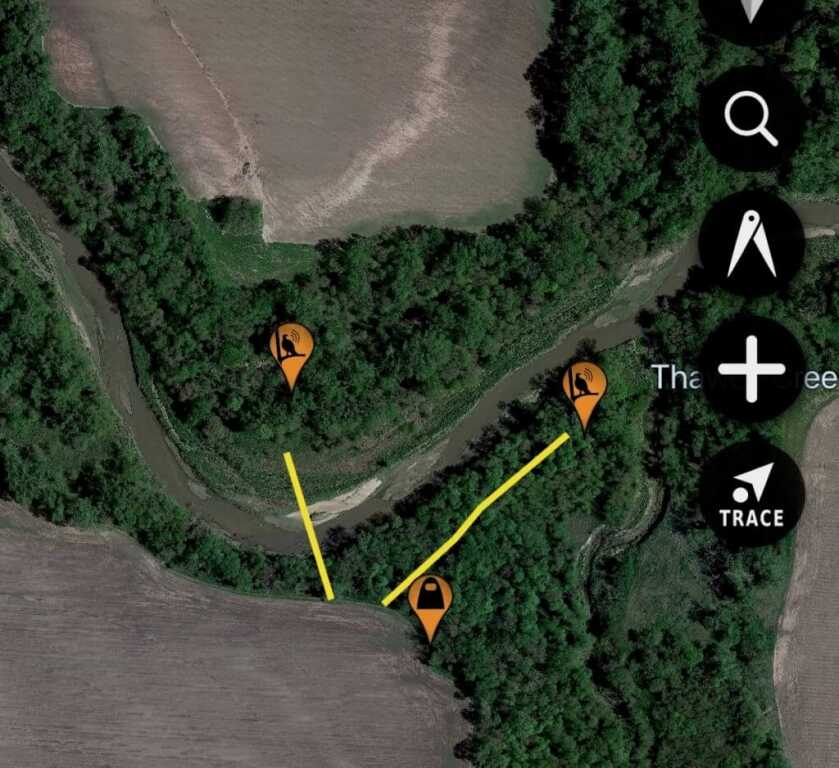
Our plan for the opening morning was to use the inky black cover of darkness, slip 400 yards around the roost and set up a Primos Double Bull ground blind, a Dave Smith Decoy 3/4 Strut, Feeding Hen, and Mating Hen. We navigated to the exact spot we wanted to set up on the field and setup.
Thirty-eight minutes after flying down, the nine hens hit the field less than 80 yards from our decoys. They were annoyed by the presence of the newbie girls, moved in, and postured up to the feeding hen. When the gobblers hit the field, they couldn’t resist, and our hunt was over in minutes.
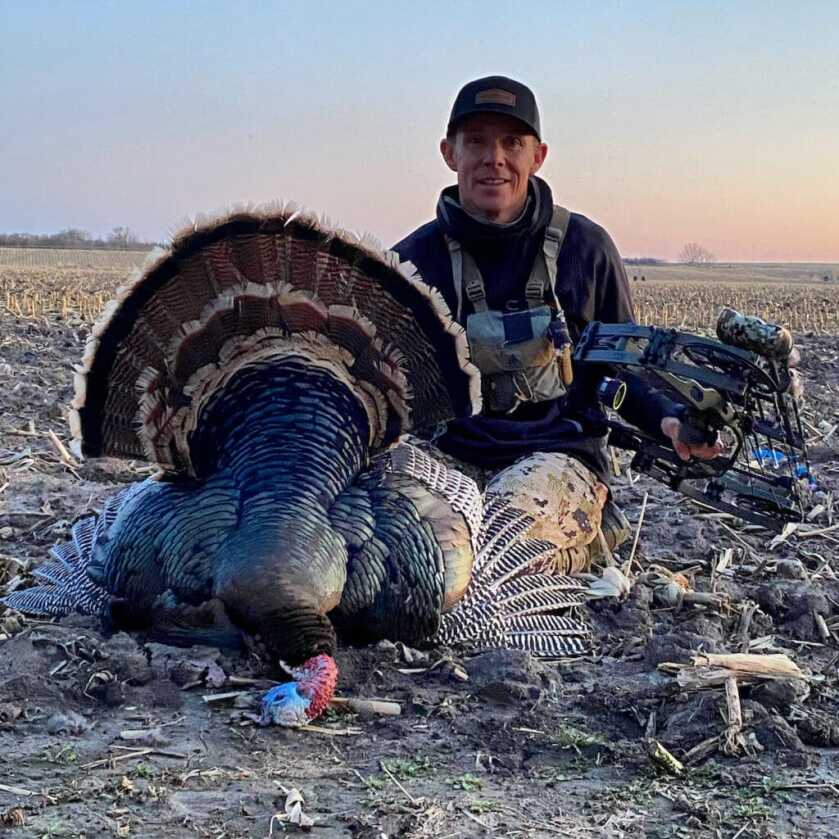
It sounds simple, and it is, but let me paint you another picture. The following year — different field but still in the Cornhusker State — we put in less work. We had a general idea of how the birds were using the field, but when the hens hit the edge of the picked soybean field, they were 150 yards away. Before the boy birds hit the field, the hens had moved further away from the decoys, and despite our calling and decoys, the toms, not even a two-year-old, would break off the group. The closer you can be to the X during the early part of the season, the better.
If you plan to hunt a field during the morning, the more intel you have about how the birds use the field and where they enter and exit, the better your success.
Early-Season Mid-Day
One of my favorite ways to kill an early-season tom with archery tackle is to keep my butt in a ground blind between 10 a.m. and 2 p.m. When hunting during this timeframe early in the season, I don’t expect — it has happened, but I don’t plan on it — a wandering tom to get fired up as he searches for a hen. It’s common, even after their morning breakfast, for toms to stay with the hens, as most hens aren’t leaving to sit on nests during this timeframe.
As with morning field edge hunting, scouting is the key to killing mid-day birds. I like to hang trail cameras in areas I’ve walked that are loaded with turkey sign. Aside from the obvious — poop, tracks, and feathers — I pay close attention to strut marks. Toms tend to strut in the same areas every day, and these areas can include: logging roads, open pastures, clear-cuts in the timber, a sandbar along a river, sage flats, etc. If you can locate these areas and get a few trail cameras set those cams will tell you the times the boy birds hit them. Keep the calls in the vest unless a tom happens to fire in the distance, and wait. It takes patience and persistence, but the trick to killing a midday turkey with archery gear during the early season is to be where the birds want to be.
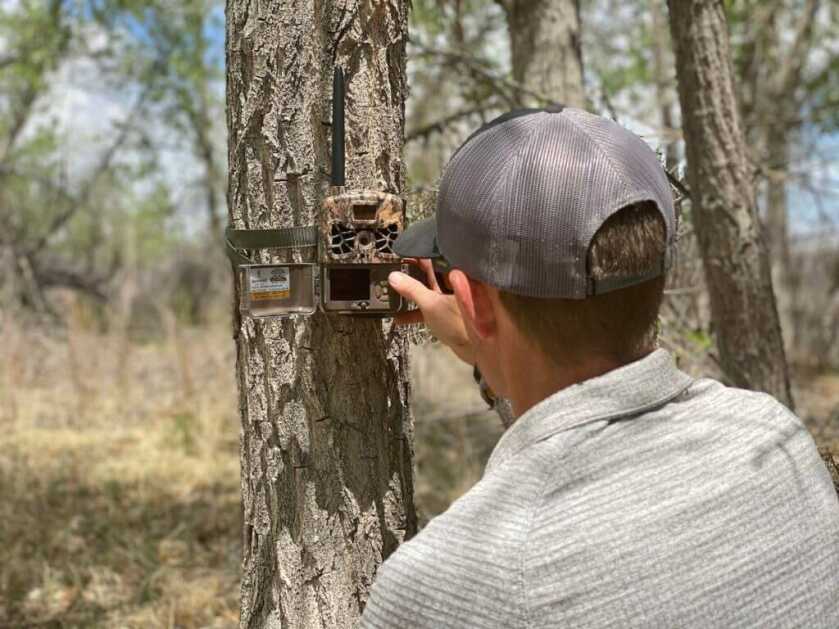
Once I deploy my blind and set my decoys, I don’t move. I am okay with the birds being late by an hour. I’m fine with not hearing a gobble or a hen yelp. Early spring birds often appear without notice or warning, and three puffed-up longbeards can be in your decoys before you can blink.
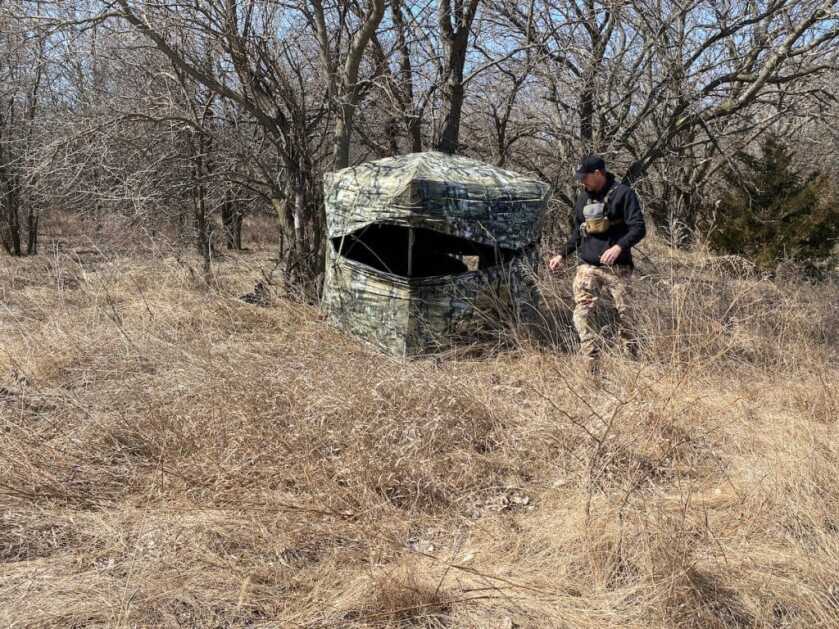
As for decoy choice, it’s hard to beat a 3/4-strut jake, but early in the season, I am okay with a full-strut tom. Dominant male birds will be looking for a fight, and if you get a few two-year-olds in that haven’t been whooped up on yet, and this early in the season, they shouldn’t have taken too many beatings, they will gang up on the lone strutter. I like Avian’s HDR Strutter and Dave Smith’s Strutter if you opt for a full-strut decoy.
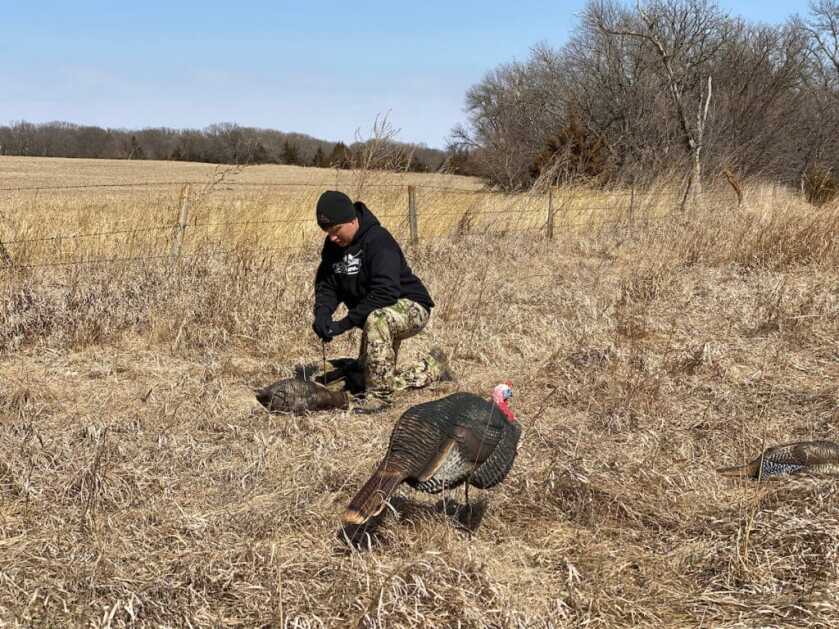
Last season in Nebraska, after striking out for two mornings in a row, we moved to a midday strut zone. The area was off the edge of a woodlot with a couple of grown-in two-track roads covered in winter grass. Trail camera photos showed heavy turkey traffic, and after getting the blind set at 11 a.m., my hunting partner and I had four dead boy birds, a tom, and three jakes, by noon. The birds kept coming and weren’t too fond of newcomers in their midday loafing and strutting area.
Evening Birds
I know a lot of bowhunters that prefer to avoid hunting evenings. I get it; blowing the roost is always a danger, but that’s why I don’t hunt anywhere close to where I know birds are roosting.
My evening plan revolves around what my scouting has taught me. Typically, after watching birds for a few days, I know how they use an area. Early-season flocks are easy to keep tabs on. Trees and bushes are still void of leaves, so a good pair of binoculars, a spotting scope, and two-track roads are your best friends. Toward evening, I typically move back to the same field the birds use in the morning; however, I sit in an area where I can break down my ground blind and pull my decoys without spooking a single bird. I also carefully plan my route back to the truck, as roosted birds don’t miss much from their elevated perch.
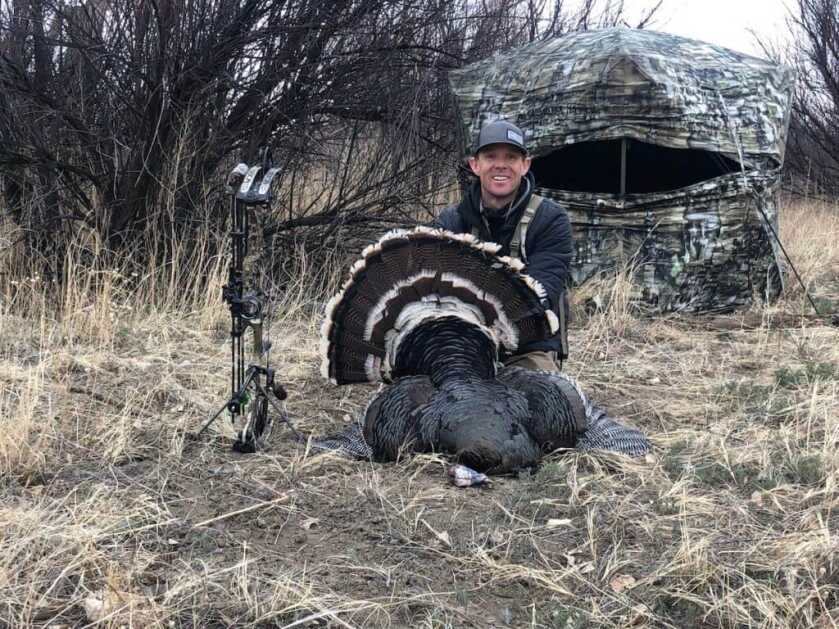
Another excellent evening tip is to note how birds use the timber as they move back toward their roost, either before or after hitting a food source. Look for little pinches or locations in the timber that funnel bird movement. If the area is tight, I deploy a ground blind with no decoys.
If you put these tactics to work during the early season, you’ll kill more birds and have a ton of fun. There will be more purpose to your hunting and less that happen-chance encounters. Remember, turkeys have nothing to do after flying down, then to eat, walk, dust, fight, and breed. They will cover a lot of ground, and if you stay in the woods and stay patient, you have a great chance of punching your tag.


